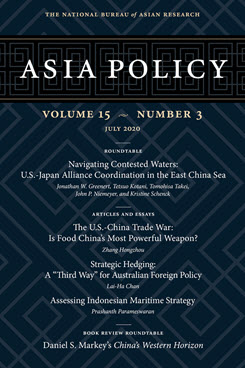China’s Military and Paramilitary Activities in the East China Sea
Trends and Assessments for the U.S.-Japan Alliance
This essay examines China’s paramilitary and military activities in the East China Sea, draws implications for the security of Japan and the broader region, and assesses crisis scenarios in the troubled waters around the Senkaku Islands and Taiwan.
Executive Summary
MAIN ARGUMENT
Assessments of China’s paramilitary and military activities in the East China Sea indicate that Beijing is less likely to seek to physically seize the Senkaku Islands in the near future. The China Coast Guard’s daily presence in the vicinity of the islands and occasional intrusions into Japan’s territorial waters ably demonstrate Beijing’s opposition to Japanese control of the Senkaku Islands. Such displays of opposition appeal to the Chinese people. However, should Taiwan eventually be reunified with mainland through either peaceful or coercive means, the Senkaku Islands would remain a “lost territory.” Furthermore, reunification would shift the military balance in the East China Sea dramatically in favor China. In such a scenario, armed conflict over the Senkaku Islands would become more likely.
POLICY IMPLICATIONS
- Tokyo and Washington should begin bilateral planning for Taiwan contingency scenarios based on the 2015 U.S.-Japan defense guidelines. Without sufficient joint planning, the two allies will be at a disadvantage to respond to such a scenario.
- Given China’s massive theater missile capabilities, Tokyo and Washington need to fill the missile gap in the Pacific by co-developing intermediate-range missiles and deploying these in Japanese territory.
- There is a need to further integrate Japanese and U.S. forces. The former is a resident force, while the latter is an expeditionary force, and Beijing could exploit this gap by a fait accompli in Taiwan or the Senkaku Islands. To avoid this scenario, Tokyo and Washington should establish a Standing Bilateral Joint Task Force in Japan’s southwestern region with multi-domain operational capabilities.
Tetsuo Kotani is a Professor at Meikai University and a Senior Fellow at the Japan Institute of International Affairs (Japan).
About Asia Policy
Asia Policy is a peer-reviewed scholarly journal presenting policy-relevant academic research on the Asia-Pacific that draws clear and concise conclusions useful to today’s policymakers. Asia Policy is published quarterly in January, April, July, and October and accepts submissions on a rolling basis. Learn more


